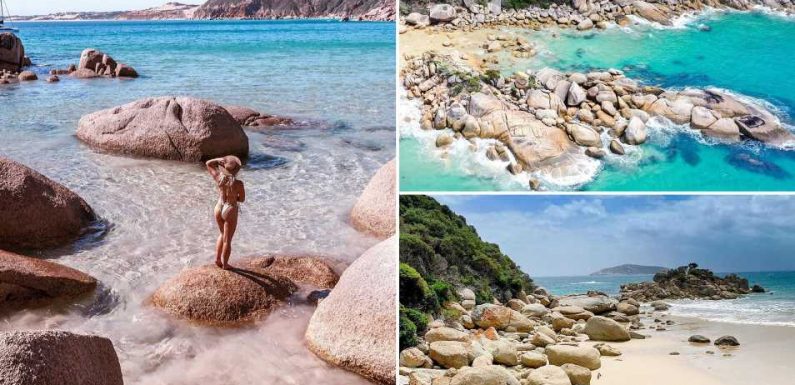
A winding coastal walk on the top of a cliff face leads to one of Victoria’s most beautiful beaches.
Fairy Cove at Wilson’s Promontory has been attracting adventure-starved tourists while Australia’s international borders remain shut, with any reopening beyond New Zealand’s trans-Tasman and other ‘safe’ travel bubbles now unlikely until mid-2022.
Visitors have compared the secluded beach, a three-hour drive 214km south-east of the Melbourne CBD, to island paradises such as the Seychelles.
A video of the cove captured by travel agent turned travel blogger Caitlyn, who posts as ‘The Wanderlust Times’, shows stretches of pure white sand flanked by sparkling turquoise ocean.
The beach can be reached by a walking trail raised on wooden planks that takes 45 minutes each way if you walk at a moderate pace.
Gallery: The world’s most breathtaking natural coastal wonders (Daily Mail)
Down on the sand, the cove is filled with giant boulders, rock pools and native wildlife.
Caitlyn warned there is a ‘bit of an incline’ on the way up, but promised you will be welcomed with ‘amazing views over the whole national park’ once you reach the top.
She said she was one of only three visitors to the ‘hidden gem’ beach, meaning it hasn’t become a mainstream attraction for Australians just yet.
Her clip, which has drawn almost 600 ‘likes’ since it was uploaded to Instagram on March 26, has sparked stunned responses.
‘Wow, how beautiful,’ one viewer wrote.
‘This really is enchanting, it looks like the Seychelles!’ said a second, while a third couldn’t believe the blueness of the water.
Others said they were shocked that such an exotic beach existed in Victoria.
Source: Read Full Article

















































